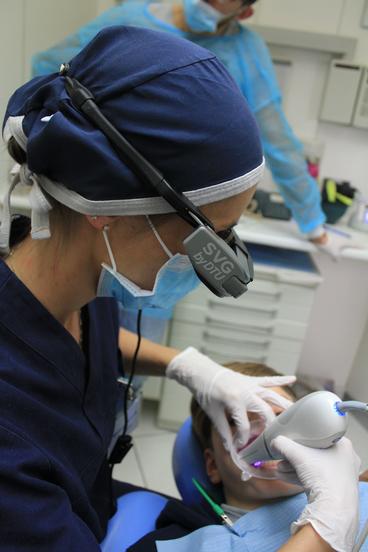
Photo by Quang Tri NGUYEN on Unsplash
Statewide Study of Youth Oral Health Reveals Serious Care Gaps for Minnesota Kids in Foster Care
It’s no secret that children in the foster care system often face hardships. Children in foster care often have complex trauma histories and face many challenges their peers may not deal with. However, as HYD-PRC Associate Professor Rebecca Shlafer recently found out, access to dental care is also a major hurdle that children in foster care face as well.
Frustrated and confused by the roadblocks Shlafer and her husband personally experienced when they unexpectedly became foster parents in 2014, she reached out to her colleague, UMN Clinical Associate Professor of Pediatric Dentistry, Elise Sarvas, DDS, MSD, MPH. Sarvas told her the challenges she experienced weren’t unique – getting foster kids and other kids from low-income households into the dentist was exceptionally difficult. Sarvas shared that Minnesota’s reimbursement rates for Medicaid patients were so low (providers are being reimbursed using rates set back in 1989) that dentists cap the number of patients they treat with this insurance to prevent losing money.
Determined to turn her frustration into action, Shlafer teamed up with Sarvas, UMN Division of General Pediatrics and Adolescent Health Associate Professor Judith Eckerle, MD, and Assistant Professor Kimara Gustafson, MD, MPH, along with UMN Clinical and Translational Science Institute biostatistician, Rebecca Freese, MS, to collaborate on a research study to examine oral health needs and access to dental care among foster youth in Minnesota. The team capitalized on data from the Minnesota Student Survey, a survey administered every three years to fifth, eighth, ninth, and eleventh grade students across the state.
Using this information, Shlafer and colleagues were able to show that children in the foster care system aren’t getting the dental health care they need compared to their peers not in the foster care system. Sarvas noted, “This was the first time that these children in their own words told us that they were in pain and they were hurting.” Shlafer hopes this data will spark a conversation and promote changes to eliminate barriers foster care children face when it comes to obtaining simple dental care. “Accessing proper dental care from a young age has really important implications for other areas of physical health and well-being. When foster kids can’t get good dental care, it impacts their current and future well-being,” said Shlafer. “If more people are aware of the inequities that exist and their long-term consequences, perhaps those with influence will step forward to make changes”, she added.
This article was adapted from the original article by Andy Steiner at MinnPost. To read the full article, follow this link.
The full research article, “Oral Health Needs Among Youth with a History of Foster Care” can be found here.